
Looking up into the night sky it is often hard to conceptualize just how vast of a space you’re looking at.
Sirius is one of the brightest stars in the night sky and yet it is 8.6 light years away. Moving a little closer to earth, one of the most prominent features of the night sky is the moon, but this is still about 239,000 miles from Earth. The geography of the solar system might be hard to conceptualize while just looking up at constellations, however thanks to the Slovakian company, INOVE, our solar system has become easier to visualize. INOVE has created Solar System Scope, a visual interactive solar system – www.solarsystemscope.com.
Don’t let the new age music throw you off; Solar System Scope (SSS) is an incredible resource! Using data and images from NASA, SSS allows users to move through the solar system giving a sense of geography to the solar system. The sun, planets, dwarf planets, comets, major stars, and constellations along with their orbits and positions are all represented and can be clicked on for more information.
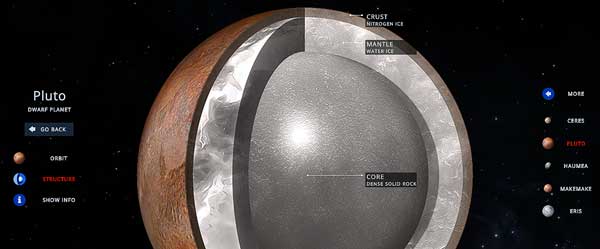
Visually seeing the planet’s orbits relative to each other and moving through them provides an idea of the size of the solar system. The orbit of Pluto is particularly interesting as it is extremely evident in SSS that Pluto’s orbit brings it between Neptune and the Sun. This orbit is one of the reasons Pluto was demoted to dwarf planet. To learn more about why Pluto was demoted from planet to dwarf planet, read Eva’s blog here: https://dirtyclassroom.com/poor-pluto/ .
This supplements the Planet Walk activity we do in our Astronomy lesson at High Trails. Students build the solar system by physically walking the distances (to scale) between the planets. Flashlight-lit water bottles are placed on the ground representing each planet. By the time students get to Neptune, the Sun and four inner planets are little pricks of light way down the path. Students are perpetually amazed at the great distance the solar system spans.
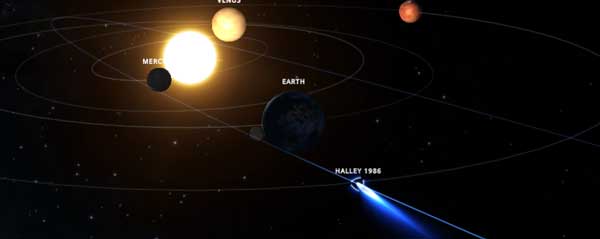
Navigating throughout the solar system, the tracks of comets are revealed. Adjusting the time frame allows the user to see the comet’s path when it’s closest to earth or in its last perihelion (closest to the Sun) path making it visually obvious why Halley’s comet is only visible once every 75 years.
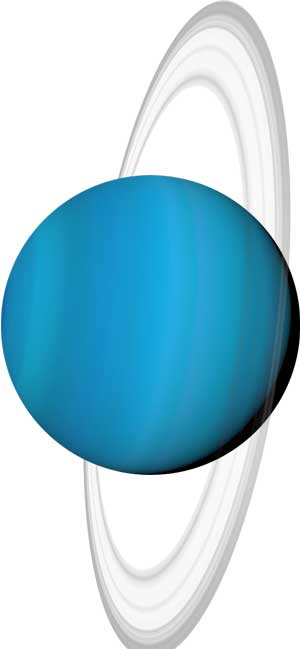 Exploring a planet in itself is an eye opening experience. Each planet has imagery of its atmosphere as viewed from Earth and viewed from the bright side of the planet, along with imagery of the surface of the planet from both views.
Exploring a planet in itself is an eye opening experience. Each planet has imagery of its atmosphere as viewed from Earth and viewed from the bright side of the planet, along with imagery of the surface of the planet from both views.
Click the “Structure” button to have the layers and material of the planet revealed. The “Encyclopedia” button not only gives basic statistic about the planet but also unusual or interesting facts, information on its discovery, and the best ways to observe the planet from earth.
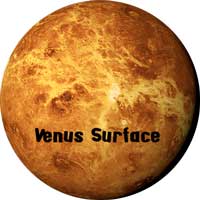 Did you know that Earth and Venus are very similar in size and structure? However the sulfuric acid and dust atmosphere of Venus causes an extreme greenhouse effect making it extremely inhospitable for life. The volcanic features on the surface plus the lack of tectonic plates also contribute to the ever-increasing amount of CO2 and heat in Venus’s atmosphere. These two images, taken from the “Downloads” section of SSS, show the atmospheric view and surface views of Venus.
Did you know that Earth and Venus are very similar in size and structure? However the sulfuric acid and dust atmosphere of Venus causes an extreme greenhouse effect making it extremely inhospitable for life. The volcanic features on the surface plus the lack of tectonic plates also contribute to the ever-increasing amount of CO2 and heat in Venus’s atmosphere. These two images, taken from the “Downloads” section of SSS, show the atmospheric view and surface views of Venus.
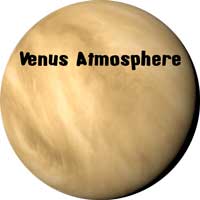 Solar System Scope is an incredible tool. Unfortunately, for us High Trails instructors living in the middle of a National Forest with our slow internet (itself coming from a satellite), it isn’t always a convenient tool we can utilize daily – we’ll just have to stick with the gorgeous night sky we have.
Solar System Scope is an incredible tool. Unfortunately, for us High Trails instructors living in the middle of a National Forest with our slow internet (itself coming from a satellite), it isn’t always a convenient tool we can utilize daily – we’ll just have to stick with the gorgeous night sky we have.
But you, dear readers, living in the modern world with Internet and a night sky possibly tinted with the orange glow of light pollution, will find this is a perfect way to learn and explore our solar system.
At High Trails Outdoor Science School, we literally force our instructors to write about elementary outdoor education, teaching outside, learning outside, our dirty classroom (the forest…gosh), environmental science, outdoor science, and all other tree hugging student and kid loving things that keep us engaged, passionate, driven, loving our job, digging our life, and spreading the word to anyone whose attention we can hold for long enough to actually make it through reading this entire sentence. Whew…. www.dirtyclassroom.com

Comments are closed.